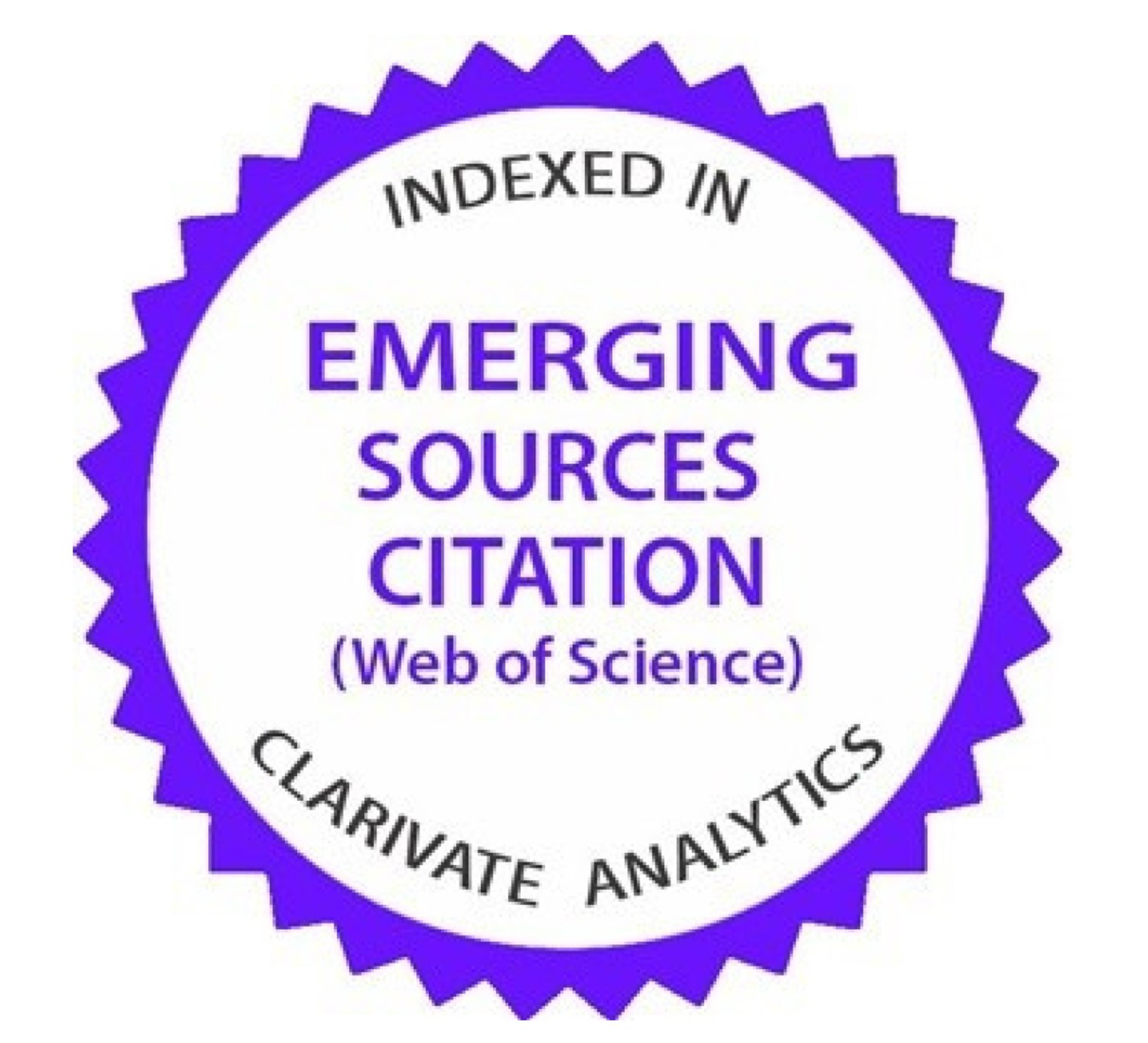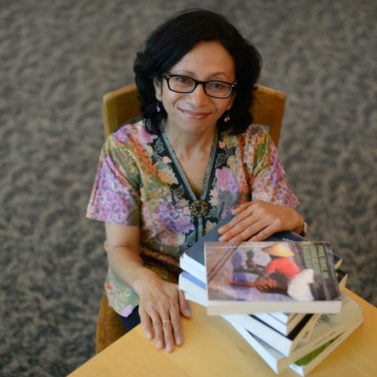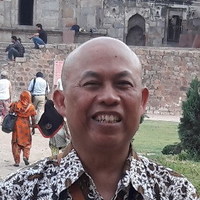Ideology, culture, and national unity under Soekarno’s leadership
Downloads
This article explores President Sukarno’s cultural politics in shaping the ideological framework, mobilizing tradition, and fostering national unity in the early Republic of Indonesia (1945–1965). Sukarno’s articulation of Pancasila went beyond a mere political manifesto by embedding the five principles in cultural performances, state-sponsored rituals, and heritage initiatives. Through major exhibitions, architectural projects, and mass media campaigns, Sukarno mobilized folklore, traditional arts, and popular culture to construct a shared national narrative. Furthermore, the Nasakom doctrine exemplifies his efforts to integrate nationalism, religion, and communism into a cohesive cultural narrative, reducing ideological divisions and formalizing pluralist discourses. Using qualitative research with discourse analysis of speeches, policy decrees, and contemporary media reports—and grounded in Gramscian cultural hegemony theory—this study unpacks the mechanisms of cultural governance under Sukarno. Findings suggest that these cultural strategies played a significant role in consolidating state authority, fostering a sense of collective identity, and leaving a lasting imprint on Indonesian civic culture beyond Sukarno’s presidency. This article contributes to scholarship on postcolonial nation-building by bridging political history and cultural studies, offering new insights into the performative dimensions of early Indonesian statehood.
Ahanger JA & Rather MA (2017) Post-colonial politics in India: A study of Nehru’s political vision. The Indian Journal of Political Science 78 (2):213-218. https://www.jstor.org/stable/26534961.
Alfian (1971) Indonesian political thinking: A review. In: Feith H & Castles L. Review of Indonesian political thinking: 1945-1965. Indonesia 11: 193-200. https://www.jstor.org/stable/3350750.
Arakaki RK (2004) Religion and state-building in post-colonial Southeast Asia: A comparative analysis of state-building strategies in Indonesia and Malaysia. Dissertation, University of Hawai’i, Honolulu.
Ariwijaya M & Arif M (2021) Peristiwa sejarah 1965 dalam karya seni instalasi. Sakala Jurnal Seni Rupa Murni 2 (1):205-220. http://journal.unesa.ac.id/index.php/jadaja.
Aryal SK (2025) India and Central Asia in the Post-Cold War Era: Security, Economic and Socio Cultural Dimensions. Oxfordshire: Taylor & Francis. 295.
Aziz APA (2019) The Preamble of 1945 constitutions as post-colonial normative expression and its contextuality (a politics of law analysis). Digital Press Social Sciences and Humanities 2: 00003. https://doi.org/10.29037/digitalpress.42254.
Bandyopadhyaya K (1977) The Indonesian economy in transition: From guided economy to new order. India Quarterly 33 (4):432-453. https://doi.org/10.1177/097492847703300404.
Bass JR (1970) The PKI and the attempted coup. Journal of Southeast Asian Studies 1 (1):96-105. https://doi.org/10.1017/S0022463400000114.
Bootsma N (1995) The discovery of Indonesia; Western (non-Dutch) historiography on the decolonization of Indonesia. Bijdragen tot de taal-, land- en volkenkunde / Journal of the Humanities and Social Sciences of Southeast Asia 151 (1):1-22. https://doi.org/10.1163/22134379-90003053.
Bourchier D & Hadiz V (2014) Indonesian Politics and Society: A Reader. London: Routledge.
Budirahayu T, Wijayanti MM, & Baskoro K (2018) Understanding the multiculturalism values through social media among Indonesian youths. Masyarakat, Kebudayaan Dan Politik 31 (4):427-439. https://doi.org/10.20473/mkp.v31i42018.427-439.
Burlian P (2020) Pemikiran Soekarno dalam perumusan Pancasila. Doctrinal 5 (2):143-169. http://jurnal.um-palembang.ac.id/doktrinal/article/view/2907.
Case W (2010) Exemplar or anomaly? Exiting the new order in comparative perspective. In: Soeharto’s New Order and Its Legacy: Essays in honour of Harold Crouch. https://doi.org/10.22459/snol.08.2010.12.
Castellano G (2021) Art and Polyics in Times of Reform: The Collective and the Contemporary in Indonesia. New York: State University of New York Press.
Creswell JW (2014) Research Design: Qualitative, Quantitative, and Mixed Methods Approaches (4th ed). California: SAGE.
Damanhuri H & Raharja RM (2019) The transformation of character ideology of Pancasila through education. Saudi Journal of Humanities and Social Sciences 4 (4):274-278.
Djiwandono JS (1977) Indonesia’s relations with other Southeast Asian countries. Asian Perspective 1 (1):32-52. https://doi.org/10.1353/apr.1977.a921046.
Elson RE (2008) The Idea of Indonesia: A History. Cambridge: Cambridge University Press.
Faisal I (2018) Religion, state, and ideology in Indonesia: A historical account of the acceptance of Pancasila as the basis of Indonesian state. Indonesian Journal of Interdisciplinary Islamic Studies 1 (2):19-58. https://doi.org/10.20885/ijiis.vol1.iss2.art2.
Feillard A & Madinier R (2011) History of Islam in Indonesia: Between acculturation and rigour. In: Wong W (trans). The End of Innocence? Institut de recherche sur l’Asie du Sud-Est contemporaine. https://doi.org/10.4000/12eg7.
Feith H (1964) President Soekarno, the army and the communists: The triangle changes shape. Asian Survey 4 (8):969-980. https://doi.org/10.2307/2642634.
Fitch RM & Webb SA (2018) Cultural immersion in Indonesia Through Pancasila: State ideology. Journal of Educational Thought / Revue de La Pensée Educative 23 (1):44-51. https://doi.org/10.55016/ojs/jet.v23i1.44257.
Forgacs D (1988) The Antonio Gramsci Reader - Selected Writings 1916-1935. London: Lawrence & Wishart. https://muse.jhu.edu/book/34790.
Friend T (1976) Review of Sukarno: A political biography, by JD Legge. The American Historical Review 81 (4):947–948. https://doi.org/10.2307/1864996.
Galbraith FJ (1986) The coup that failed—Indonesia 1965. The National Interest (3):97-100. https://www.jstor.org/stable/42894422.
George AL & Bennett A (2005) Case Studies and Theory Development in the Social Sciences. Cambridge: MIT Press.
George KM (1997) Some things that have happened to the sun after September 1965: Politics and the interpretation of an Indonesian painting. Comparative Studies in Society and History 39 (4):603-634. https://doi.org/10.1017/S001041750002082X.
George KM (1998) Designs on Indonesia’s Muslim communities. The Journal of Asian Studies 57 (3):693-713. https://doi.org/10.2307/2658738.
Hill M (1993) Archival research, oral history research, documentary research. The Charleston Advisor 19 (4). Thousand Oaks: SAGE Publications, Inc. https://doi.org/10.4135/9781412983471.
Hindley D (1968) Indonesian politics 1965-7: The September 30 movement and the fall of Sukarno. The World Today 24 (8):345-356. https://www.jstor.org/stable/40394159.
Hongxuan L (2023) Ummah Yet Proletariat: Islam, Marxism, and the Making of the Indonesian Republic. New York: Oxford Academic. https://doi.org/10.1093/oso/9780197657386.001.0001.
Hongxuan L (2018) Sickle as crescent: Islam and communism in the Netherlands East Indies, 1915-1927. Studia Islamika 25 (2):309-350.
Hoon CY (2013) Multicultural citizenship education in Indonesia: The case of a Chinese Christian school. Journal of Southeast Asian Studies 44 (3):490-510. https://doi.org/10.1017/S0022463413000349.
Jones T (2011) Indonesian cultural policy in the Reform Era. Southeast Asia Program Publications at Cornell University (93):147-176. https://www.jstor.org/stable/10.5728/indonesia.93.0147.
Kaelan (2013) Negara Kebangsaan Pancasila: Historis, Kultural, Filosofis, Yuridis, dan Aktualisasinya (I). Yogyakarta: Paradigma Press.
Kimura E, Istania R, Afrimadona, Imawan RP, & Ramadhan D (2024) Authoritarian nostalgia and democratic decline in contemporary Indonesia. Journal of Current Southeast Asian Affairs 43 (3):387-408. https://doi.org/10.1177/18681034241252452.
Kristiyanto H (2023) Geopolitik Bung Karno Progressive Geopolitical Coexistence (vol 1). Bogor: Unhan RI Press.
Kriswanto (2013) Peranan Radio Republik Indonesia Yogyakarta dalam pelestarian karawitan. Resital: Jurnal Seni Pertunjukan 10 (1). https://doi.org/10.24821/resital.v10i1.470.
Kuntowijoyo K (1987) Religion, state and social formation in Indonesia. Asian Journal of Social Science 15 (1):1-15. https://doi.org/10.1163/080382487X00028.
Kurniawan A (2020) Pancasila pada masa orde lama. Guru Pendidikan 1: 1-15. https://www.gurupendidikan.co.id/pancasila-pada-masa-orde-baru/.
Legge JD (1970) Sukarno and the Struggle for Indonesian Independence. In: Dahm B. Revised and updated edition of Sukarnos Kampf um Indonesiens Unabhängigkeit. Heidhues MFS (trans German). Ithaca: Cornell University Press. The Journal of Asian Studies, 30(1), 235-237. https://doi.org/10.2307/2942796.
Li Y (2023) Art diplomacy: Drawing China-Indonesia relations in the early Cold War, 1949–1956. Modern Asian Studies 57 (6):1707-1742. https://doi.org/10.1017/S0026749X23000227.
Lindsay J (2012) Heirs to world culture 1950–1965: An introduction. In: Lindsay J & Liem MHT (ed). Heirs to World Culture: Being Indonesian 1950–1965. 1-27. Leiden: KITLV Press.
Lloyd J & Toogood L (2015) Journalism and PR; News Media and public relation in the digital age. Paper Knowledge. Toward a Media History of Documents. 1-139.
Lüthi LM (2016) The non-aligned movement and the cold war, 1961–1973. Journal of Cold War Studies 18 (4):98-147. https://doi.org/10.1162/JCWS_a_00682.
Majid A & Sugitanata A (2021) Sistem pemilu sebagai wujud demokrasi di Indonesia: Antara orde lama, orde baru dan reformasi. Qaumiyyah: Jurnal Hukum Tata Negara 2 (1):1-21. https://doi.org/10.24239/qaumiyyah.v2i1.18.
Maksum A, Febrianto PT, & Wahyuni EN (2019) Interpretation of democracy, pluralism and tolerance among the young activists of Muhammadiyah and Nahdlatul Ulama. Masyarakat, Kebudayaan Dan Politik 32 (3):275. https://doi.org/10.20473/mkp.v32i32019.275-289.
Martin I (2003) The popular consultation and the United Nations mission in East Timor — first reflections. Out of the Ashes: Destruction and Reconstruction of East Timor. https://doi.org/10.22459/oa.11.2003.08.
McGregor K (2016) Cold war scripts: Comparing remembrance of the malayan emergency and the 1965 violence in Indonesia. South East Asia Research 24 (2):242-260. https://doi.org/10.1177/0967828X16649310.
Menchik J (2014) Productive intolerance: Godly nationalism in Indonesia. Comparative Studies in Society and History 56 (3):591-621. https://doi.org/10.1017/S0010417514000267.
Mousa NM, Sinha SC, Gunarto I, Terzic M, & Chikhi A (2021) Nomination form the First Summit Meeting of the Non-Aligned Movement Archives. Paris: UNESCO.
Mrázek J (1999) Javanese wayang kulit in the times of comedy: Clown scenes, innovation, and the performance’s being in the present world. Part One. Indonesia 68 (69):38-128. https://doi.org/10.2307/3351296.
Nasoha AMM, Atqiya AN, & Salsabila NA (2024) Peran Pancasila sebagai pedoman kehidupan berbangsa dan bernegara dalam dinamika sejarah dan perkembangannya. TUTURAN: Jurnal Ilmu Komunikasi, Sosial Dan Humaniora 2 (4):379-395. https://doi.org/10.47861/tuturan.v2i4.1379.
Nasirin AA & Abdurakhman A (2024) Telusur aktivitas Lekra Masa Demokrasi Terpimpin tahun 1959-1965. Historia: Jurnal Pendidik Dan Peneliti Sejarah 7 (1):27-38.
Neliawati ILG, Purwanto, Sriwulandari N, & Bela AA (2024) Sejarah perkembangan Radio Republik Indonesia (RRI). Jurnal Nirwasita 5 (2):135-137. https://doi.org/10.59672/nirwasita.v5i2.3786.
Nichterlein S (1974) Historicism and historiography in Indonesia. History and Theory 13 (3):253-272. https://www.jstor.org/stable/2504779.
Nugroho K, Carden F, & Antlov H (2018) Pentingnya Pengetahuan Lokal! Kekuasaan, Konteks dan Pembuatan Kebijakan di Indonesia. Jakarta: Knowledge Sector Initiative.
Nurwahyu FF (2022) Pancasila and the constitution of the Republic of Indonesia 1945 in the constitution of Indonesia. In: Proceeding International Conference on Law, Economy, Social and Sharia (ICLESS) 1 (1):547-571. November, 2022. https://proceeding.icless.net/index.php/icless22/article/view/44.
Octavian WA & Dianti P (2023) Nasionalisme dan Pancasila perspektif Sukarno. Journal on Education 5 (3):7553-7562. https://doi.org/10.31004/joe.v5i3.1512.
Orr IC (1974) Puppet theatre in Asia. Asian Folklore Studies 33 (1):69-84. https://doi.org/10.2307/1177504.
Pauker GJ (1965) Indonesia in 1964: Toward a “people’s democracy”? Asian Survey 5 (2):88-97. https://doi.org/10.2307/2642485.
Pauker ET (1964) Has the Sukarno regime weakened the PKI?. Asian Survey 4 (9):1058-1070. https://www.jstor.org/stable/2642398.
Pinasang D (2020) Falsafah Pancasila sebagai norma dasar (grundnorm) dalam rangka pengembanan sistem hukum nasional. Jurnal Hukum Unsrat 20 (3):1-10.
Pratama YPRA (2022) Sejarah Pergerakan Nasional Indonesia. Jawa Tengah: Lakeisha.
Prawiranegara S (1984) Pancasila as the sole foundation. Indonesia (38):74-83. https://www.jstor.org/stable/3350846.
Purdy SS (1982) The civil religion thesis as it applies to a pluralistic society: Pancasila democracy in Indonesia (1945-1965). Journal of International Affairs 36 (2):307-316. https://www.jstor.org/stable/24356443.
Putra GRA (2019) Bahaya doktrin politik komunisme. Adalah 3 (1):63-72. https://doi.org/10.15408/adalah.v3i1.18306.
Putra IND (1965) Getting organized Culture and nationalism in Bali, 1959-1965. Leiden: Brill press.
Rahawarin ZA (2021) Viewing Pancasila in the eyes of nationalists in Indonesian new order era. Journal of Social Studies Education Research 12 (4):64-92. https://www.learntechlib.org/p/220451/.
Rakove RB (2015) The rise and fall of non-aligned mediation, 1961–6. The International History Review 37 (5):991-1013. https://doi.org/10.1080/07075332.2015.1053966.
Razuni G (2023) Bung Karno’s political thought according to Pancasila: A study of Bung Karno’s speech on June 1, 1945, and the President Soekarno/Bung Karno’s Pancasila course throughout 1958-1959. JWP (Jurnal Wacana Politik) 8 (2):223. https://doi.org/10.24198/jwp.v8i2.50119.
Redfern WA (2010) Sukarno’s guided democracy and the takeovers of foreign companies in Indonesia in the 1960s. Dissertation, University of Michigan, Ann Arbor. https://deepblue.lib.umich.edu/handle/2027.42/77846.
Redpel (2023) Naskah lengkap pidato Sukarno 1 Juni 1945, lahirnya Pancasila. Situs PDI Perjuangan Jatim, 1 June. [Accessed 27 June 2025]. https://pdiperjuangan-jatim.com/naskah-lengkap-pidato-sukarno-1-juni-1945-lahirnya-pancasila/.
Robinson G (2017) “Down to the very roots”: The Indonesian Army’s role in the mass killings of 196566. Journal of Genocide Research 19 (4):465-486. https://doi.org/10.1080/14623528.2017.1393935.
Scott C (2019) Cultural Diplomacy and the Heritage of Empire: Negotiating Post-Colonial Returns. London: Routledge. https://doi.org/10.4324/9781351164245.
Setiawan A (2018) Atlas Sejarah Indonesia Berita Proklamasi Kemerdekaan. Jakarta: Direktorat Sejarah Direktorat Jenderal Kebudayaan Kementerian Pendidikan dan Kebudayaan Republik Indonesia.
Soekarno (1965) Dibawah Bendera Revolusi Djilid kedua II. Di bawah Bendera Revolusi.
Soekarno (2016) Dibawah Bendera Revolusi Jilid 1. Jakarta: Banana Books.
Sukri M (2016) Sejarah peradilan agama di Indonesia (pendekatan yuridis). Jurnal Ilmiah Al-Syir’ah 10 (2). https://doi.org/10.30984/as.v10i2.252.
Suryadi (2011) Review of performing otherness: Java and Bali on international stages, 1905-1952, by MI Cohen. Bijdragen Tot de Taal-, Land- En Volkenkunde 167 (4):568-572. http://www.jstor.org/stable/41329012.
Suryadi FR & Nelwati S (2024) Mengupas sistem demokrasi Indonesia, keunikan dan perbandingan global. Dewantara: Jurnal Pendidikan Sosial Humaniora 3 (3):32-39. https://doi.org/10.30640/dewantara.v3i3.2823.
Sutter JO (1966) Two faces of konfrontasi: “crush Malaysia” and the Gestapu. Asian Survey 6 (10):523-546. https://www.jstor.org/stable/2642110.
Suwignyo A (2014) Indonesian national history textbooks after the new order. Bijdragen tot de taal, land- en volkenkunde / Journal of the Humanities and Social Sciences of Southeast Asia 170 (1):113-131. https://doi.org/10.1163/22134379-17001008.
Swaradesy RG (2019) Politik ideologi, penguasa, dan hegemoni budaya Antonio Gramsci. In: Kuasa Transformatif Budaya dan Media. Bandung: Sunan Ambu Press.
Syaifullah K (2015) Islam dan Marxisme di Indonesia: Hanya sebuah persinggungan. Online publication on Academia.
Van der Kroef JM (1962) Dilemmas of Indonesian communism. Pacific Affairs 35 (2):141-159. https://doi.org/10.2307/2753248.
Van der Kroef JM (1964) Indonesian communism and the changing balance of power. Pacific Affairs 37 (4):357-383. https://doi.org/10.2307/2755130.
Van der Kroef JM (1968) Sukarno, the ideologue. Pacific Affairs 41 (2):245-261. https://doi.org/10.2307/2754798.
Van der Kroef JM (1972) Indonesian nationalism reconsidered. Pacific Affairs 45 (1):42-59. https://www.jstor.org/stable/2755260.
Van Klinken G (1967) The Making of Middle Indonesia (1962–1965) Book. Leiden: Brill.
Wahyuningsih S (2013) Metode Penelitian Studi Kasus: Konsep, Teori Pendekatan Psikologi Komunikasi, dan Contoh Penelitiannya. Madura: UTM PRESS Bangkalan.
Ward K (1982) Soeharto’s Javanese Pancasila. In: Aspinall E & Fealy G (ed). Soeharto’s New Order and its Legacy, Essays in honor of Harold Crouch. Canberra: ANU Press. 27-37.
Wardaya BT (2012) Diplomacy and cultural understanding: Learning from US policy toward Indonesia under Sukarno. International Journal Autumn 67 (4):1051-1061. https://doi.org/10.1177/002070201206700411.
Webber J (2024) A democracy-friendly theory of the rule of law. Hague Journal on the Rule of Law 16 (2):339-374. https://doi.org/10.1007/s40803-024-00240-5.
Widyastutieningrum SR (2018) Reviving wayang orang Sriwedari in Surakarta: Tourism-oriented performance. Asian Theatre Journal 35 (1):100-111. https://doi.org/10.1353/atj.2018.0015.
Wijaya E (2024) Memories of the future: Speculative cold war histories in Yosep Anggi Noen’s the science of fictions and Daniel Hui’s snakeskin. In: Lee S & Espeña DM (ed). Remapping the Cold War in Asian Cinemas. Amsterdam: Amsterdam University Press. 277-296. https://doi.org/10.2307/jj.16394403.18.
Yuliana (2021) Pancasila dan pluralisme. In: Pancasila Menuju Satu Abad Kemerdekaan. Jember: UPT Percetakan dan Penerbitan Universitas Jember. 139-162.
Zhang C & Fagan C (2016) Examining the role of ideological and political education on university students’ civic perceptions and civic participation in Mainland China: Some hints from contemporary citizenship theory. Citizenship, Social and Economics Education 15 (2):117-142. https://doi.org/10.1177/2047173416681170.
Zulkarnain Z & Abdullah R (2022) The implication of transformational Teaching on Education and Learning System Act No. 4 1950. Jurnal Civics: Media Kajian Kewarganegaraan 19 (1):110-118. https://doi.org/10.21831/jc.v19i1.47761.

This work is licensed under a Creative Commons Attribution-NonCommercial-ShareAlike 4.0 International License.
Copyright of this journal is possession of Editorial Board and Journal Manager, by the knowledge of the author, while the moral right of the publication belongs to the author.
The formal legal aspect of journal publication accessibility refers to Creative Commons Attribution-NonCommercial-ShareAlike (CC BY-NC-SA), implies that publication can be used for non-commercial purposes in its original form (cannot be modified).
Every publication (printed/electronic) are open access for educational purposes, research, and library. Other than the aims mentioned above, the editorial board is not responsible for copyright violation.
















